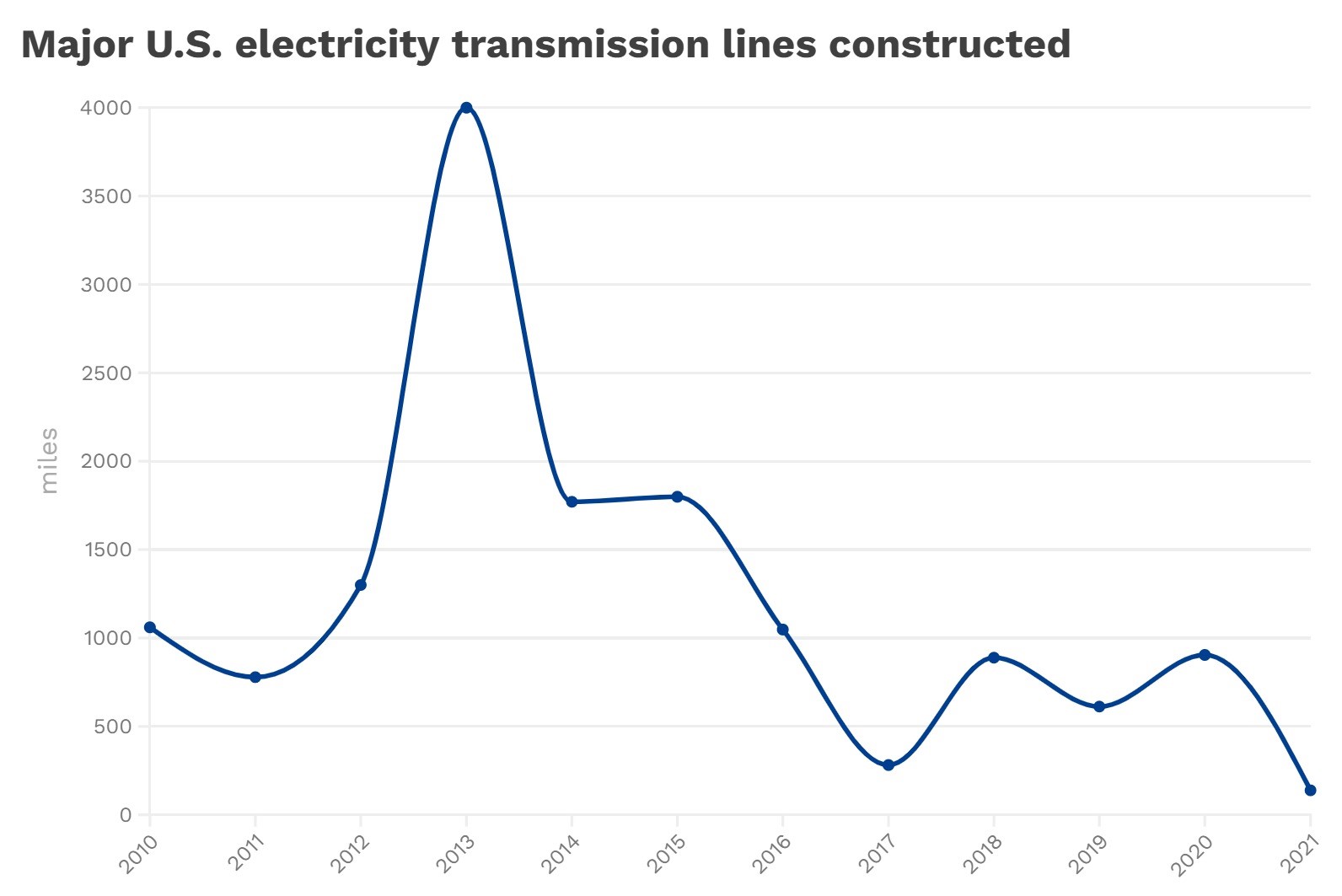U.S. clean energy grows, but new power lines don’t
Data Dive

Source: Grid Strategies LLC, Federal Energy Regulatory Commission • Data includes power lines with 345 kilovolts or more of electricity potential, which are considered major transmission lines.
The number of renewable energy projects seeking approval to connect to electricity grids has increased significantly in recent years, yet the number of miles of new power lines constructed over a similar timeline has gone down.
Less than 20% of wind and solar projects that sought regulatory approval to connect to electricity grids reached operation between 2000 and 2016, according to the same LBNL study mentioned above.
The time projects spend waiting for that approval has also increased from about two years in the first decade of this century to nearly four years in the last decade.
The average miles of power lines built annually between 2010 and 2015 was more than 1,700, compared to less than 650 miles between 2016 and 2020, according to federal data analyzed by consulting firm Grid Strategies.
Several factors feed into this, including local opposition and what most experts say is a misappropriation of cost allocations.
New projects often must pay for certain grid updates in their entirety, a cost created by, and a benefit enjoyed by, many projects.
The hurdles pile on top of each other.
The interconnection queue backlogs of wind and solar projects worsen because there aren’t enough power lines to go around.
“That’s a deterrent,” said Caroline Golin, Google’s global head of energy market development and policy. “We want to deploy all this private capital and green the grid, but it’s hurry up and wait.”